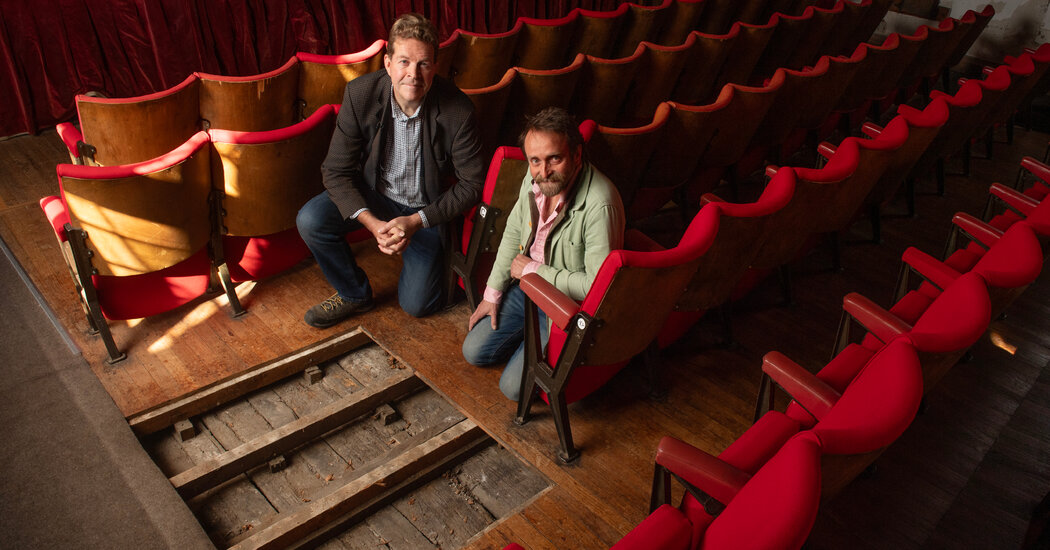How important is the wooden stage on which William Shakespeare might have played?
That depends.
During the early stages of a renovation project at St. George’s Guildhall in King’s Lynn, England, more than 100 miles northeast of London, experts discovered that timber boards found beneath layers of flooring in part of the hall date to the early 15th century.
“We’ve got the actual boards on which Shakespeare was playing, which is really, really exciting and pretty mind-blowing,” Tim FitzHigham, the creative director of St. George’s Guildhall, said on Thursday.
But some Shakespeare experts cast doubt on the significance of the discovery, noting that it was not certain that Shakespeare had touched the boards.
Most people know of Shakespeare. He rose from working-class obscurity to become one of the most revered playwrights of the last 400 years. His acclaimed works, such as “Hamlet,” “Macbeth” and “Romeo and Juliet,” all of which examine the human character, are widely studied and are regularly performed around the world today. He died in April 1616.
St. George’s Guildhall has a rich history. Its first recorded theater performance was in 1445, according to the National Trust, an organization for heritage conservation in England, Wales and Northern Ireland. By 1585, the Queen’s Players were performing there with some regularity.
Academic research suggests that Shakespeare performed with the Earl of Pembroke’s Men at the guildhall in 1593, when theaters in London were shuttered because of the plague. Robert Armin, one of Shakespeare’s leading actors, who is credited with having an influence on the playwright, was native to King’s Lynn and lived close to the theater.
Mr. FitzHigham said the guildhall had an account book proving that the theater company had been paid to perform at the venue.
Jonathan Clark, a senior archaeologist who was hired to work with the hall, spent the last two months examining the venue and the flooring.
By studying the growth rings in the wood, Dr. Clark was able to determine that the flooring dated to between 1417 and 1430, Mr. FitzHigham said. Dr. Clark then surveyed the building and found pegs — about as wide as wine corks but much longer — that hold the beams into the cross beams.
Using those clues in combination with the method of construction and other elements, Dr. Clark “confirmed that the floor that we found underneath all the other layers of flooring, that has been built up over the hundreds of years, is the original floor,” Mr. FitzHigham said.
“That would have been the floor that was there when William Shakespeare performed there in 1592-93,” he added.
For now, renovation plans at the hall are on hold until officials can answer several questions, including how they plan to keep the flooring safe and how visitors might get to experience it.
Despite the buzz among Shakespeare enthusiasts, some experts have their doubts, including Siobhan Keenan, a professor of Shakespeare and Renaissance literature at De Montfort University in Leicester, England.
“In Shakespeare’s case, we actually don’t know for certain who he was acting with before 1594,” she said, noting there are a number of theories.
What is known for certain is that a group of players called the Earl of Pembroke’s Men played at St. George’s Guildhall and that the group performed some of Shakespeare’s plays, she said. But whether he was in the company at the time, she said, is “speculative.”
Similarly, Michael Dobson, the director of the Shakespeare Institute in Stratford-upon-Avon, England, said the discovery was unlikely to shift what is known about Shakespeare.
“I don’t think it’s hugely important unless you’re a kind of fetishist who really thinks that having a piece of wood that has probably been touched by Shakespeare’s foot is going to make an enormous difference to your understanding of the plays, which I rather doubt,” he said.
Mr. Dobson noted that other — and, perhaps, more important — structures tied to Shakespeare are open to visitors, including his birthplace in Stratford-upon-Avon and his old schoolroom, where he wrote his first works.
The floorboards in St George’s Guildhall are “not the oldest thing associated with Shakespeare by any means,” Mr. Dobson said. “But it’s amazing how much clutter from the 16th century is still lying around in England.”


